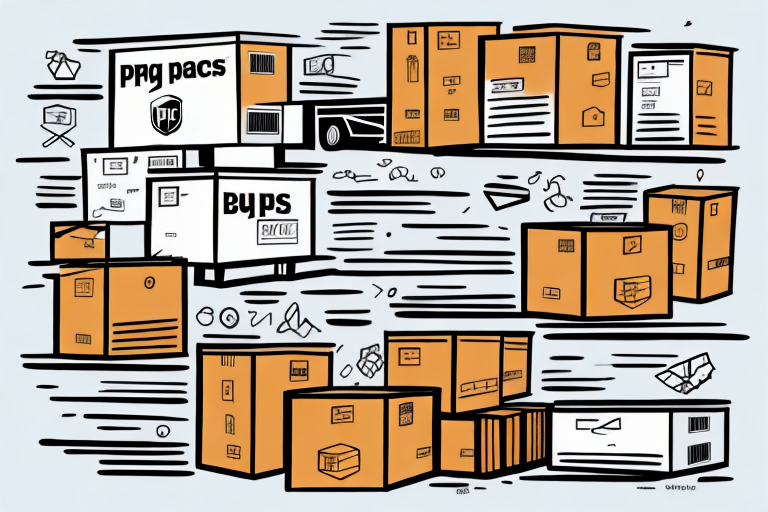UPS Shipping Rates Increase at UMN Duluth
As of January 1, 2021, UPS shipping rates at the University of Minnesota Duluth (UMN Duluth) have risen significantly. This increase has sparked concerns among students and faculty who rely on the university’s UPS services for their shipping needs. This article delves into the factors behind the UPS rate hike, its impact on the UMN Duluth community, and explores alternative shipping options available.
What Caused the UPS Shipping Rate Increase at UMN Duluth?
The surge in UPS shipping rates at UMN Duluth is primarily due to UPS's general rate adjustments announced in August 2020. These increases are not isolated to UMN Duluth but are part of a nationwide strategy to address escalating operational costs.
According to UPS's official statements, the rate increases are driven by rising expenses in several key areas:
- Fuel Prices: Fluctuations in global oil prices have a direct impact on shipping costs.
- Labor Costs: Increased wages and benefits for employees contribute to higher operational expenses.
- Technology Investments: Enhancements in logistics and automation require substantial financial investment.
- Environmental Initiatives: UPS's commitment to sustainability, including the adoption of electric vehicles, necessitates additional funding.
These factors collectively necessitated the rate adjustments to maintain UPS's service quality and operational efficiency. For more detailed information, refer to UPS's [official rate announcement](https://www.ups.com/us/en/help-center/news-release.page).
The Impact of Increased Rates on UMN Duluth Students and Faculty
The UPS shipping rate hike affects all UMN Duluth students and faculty who utilize the university’s shipping services. The implications include:
- Higher Shipping Costs: Increased rates make it more expensive to send and receive packages, straining personal and departmental budgets.
- Affordable Access to Resources: Students relying on shipped textbooks and materials may face higher expenses, potentially impacting their academic performance.
- Research Implications: Faculty members involved in research requiring shipped materials or equipment may encounter budgetary constraints.
According to the University’s budget report for 2021, shipping expenses for departments increased by an average of 12%, highlighting the financial strain caused by the rate hike.
Comparing UPS Rates with Other Shipping Services at UMN Duluth
While UPS is a primary shipping provider at UMN Duluth, other carriers like FedEx and the United States Postal Service (USPS) offer competitive alternatives. Key comparisons include:
- Cost Efficiency: USPS often provides more affordable rates for smaller packages, while FedEx may offer better rates for expedited shipping.
- Service Speed: UPS and FedEx typically offer faster delivery options compared to USPS.
- Additional Features: Services such as package tracking, insurance, and delivery guarantees vary among carriers and can influence the choice based on specific needs.
It's advisable for users to compare rates and services based on their specific shipping requirements to optimize costs and efficiency.
Strategies to Minimize the Financial Impact of UPS Rate Increases
To mitigate the effects of rising UPS rates, students and faculty at UMN Duluth can adopt several strategies:
- Utilize Discounts and Promotions: Taking advantage of UPS’s seasonal promotions or bulk shipping discounts can lead to significant savings.
- Consolidate Shipments: Combining multiple packages into a single shipment reduces the overall cost.
- Explore Alternative Carriers: Comparing rates with FedEx, USPS, and local courier services can identify more cost-effective options.
- Opt for Ground Shipping: Choosing ground over expedited shipping services can lower expenses, especially for non-urgent packages.
- Leverage University Negotiations: UMN Duluth can negotiate special rates with UPS or other carriers based on the institution’s shipping volume.
Implementing these strategies can help individuals and departments manage shipping costs more effectively.
Student Perspectives on the UPS Rate Increase
Feedback from UMN Duluth students reveals a range of concerns regarding the UPS rate hike:
- Financial Strain: Jane, a sophomore, stated, “With a tight budget, the increased shipping rates make it harder to afford necessary class materials. Exploring alternative carriers is now essential for me.”
- Impact on Online Sales: John, a senior running an online crafts business, mentioned, “Higher shipping costs reduce my profit margins, forcing me to consider raising prices or switching carriers.”
- Environmental Concerns: Sarah, a junior, expressed, “Increased shipping rates might discourage online orders, leading more people to drive to stores, which could increase pollution and traffic.”
The university is considering these student insights to better address the challenges posed by the rate increases.
The Future of Shipping at UMN Duluth Post UPS Rate Hike
UMN Duluth is actively seeking solutions to navigate the financial challenges brought by UPS's rate increase. Potential actions include:
- Negotiating with UPS: Engaging in discussions to obtain reduced rates based on the university’s shipping volume.
- Adopting Centralized Shipping Systems: Implementing a centralized hub for package distribution can streamline operations and reduce costs through bulk shipping.
- Encouraging Digital Alternatives: Promoting electronic delivery methods for documents and resources can decrease the dependency on physical shipments.
- Exploring Local Shipping Services: Partnering with regional couriers may offer more personalized and cost-effective shipping solutions.
These initiatives aim to maintain efficient shipping services while controlling expenses for the UMN Duluth community.
Broader Trends in Shipping Industry Costs
The UPS rate increase at UMN Duluth reflects wider trends in the shipping industry, characterized by rising operational costs influenced by:
- Labor Market Fluctuations: Wage increases and labor shortages have driven up costs for shipping companies.
- Supply Chain Disruptions: The COVID-19 pandemic has caused significant delays and increased costs in global supply chains.
- Surge in E-commerce: A notable rise in online shopping has heightened demand for shipping services, straining existing logistics infrastructure.
- Technological Investments: Continuous investment in automation and innovative delivery methods, such as drones, requires substantial capital.
In response to these challenges, UPS has invested in technologies like automation and robotics to enhance efficiency and reduce long-term costs. Additionally, the company is exploring sustainable delivery solutions to align with environmental goals.
For more insights into industry trends, refer to the [2023 Shipping Industry Report](https://www.shippingreport2023.com).
Potential Impact on Other Colleges and Universities
Other academic institutions may also experience similar shipping rate increases from UPS, although the extent may vary based on individual shipping volumes and contract negotiations. Key considerations include:
- Budgetary Adjustments: Institutions may need to reallocate funds or adjust budgets to accommodate higher shipping costs.
- Exploring Alternative Providers: Schools might seek partnerships with other shipping companies to secure better rates.
- Policy Revisions: Updating shipping policies to encourage cost-saving measures among students and faculty.
Collaboration among higher education institutions could also provide leverage in negotiating more favorable shipping rates with carriers like UPS.
Alternatives to Using UPS for Shipping at UMN Duluth
In light of the UPS rate increase, UMN Duluth offers several alternative shipping methods to help mitigate costs:
- FedEx: Often provides competitive rates for expedited shipments and offers reliable delivery services.
- USPS: More economical for smaller packages and offers various shipping options tailored to different needs.
- Local Courier Services: Regional couriers may offer personalized services and flexible pricing structures.
- Online Retailers: Platforms like Amazon offer free or discounted shipping for certain orders, which can be advantageous for students and faculty purchasing frequently used items.
Additionally, sharing shipping costs with peers, consolidating multiple packages into a single shipment, and utilizing communal delivery points on campus can further reduce expenses.
To maximize savings, users should evaluate their specific shipping requirements and choose the most cost-effective and efficient option available.
Conclusion
The UPS shipping rate increase at UMN Duluth is a reflection of broader challenges within the shipping industry, including rising operational costs and shifting consumer behaviors. While this adjustment poses financial challenges for students and faculty, exploring alternative shipping options, leveraging discounts, and adopting strategic shipping practices can help mitigate these impacts.
UMN Duluth is committed to supporting its community by seeking innovative solutions to maintain affordable and reliable shipping services. By staying informed and adaptable, students and faculty can navigate the evolving shipping landscape effectively.




















